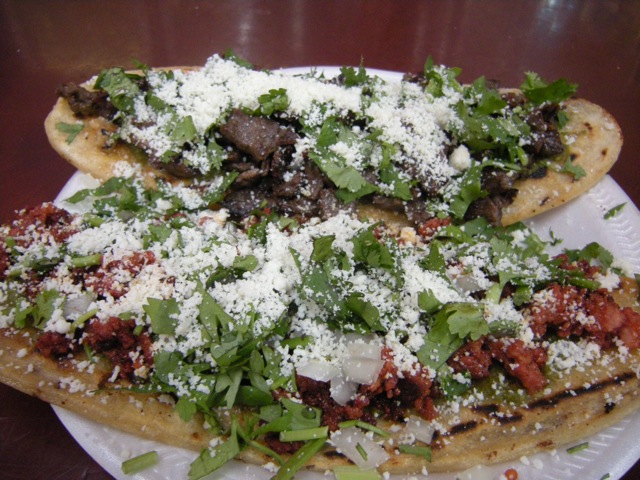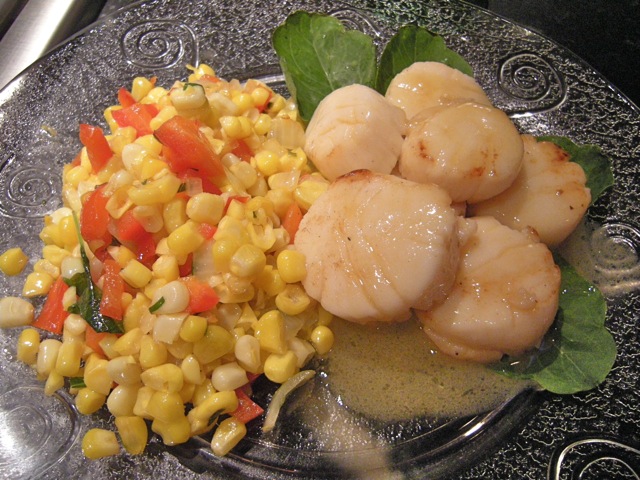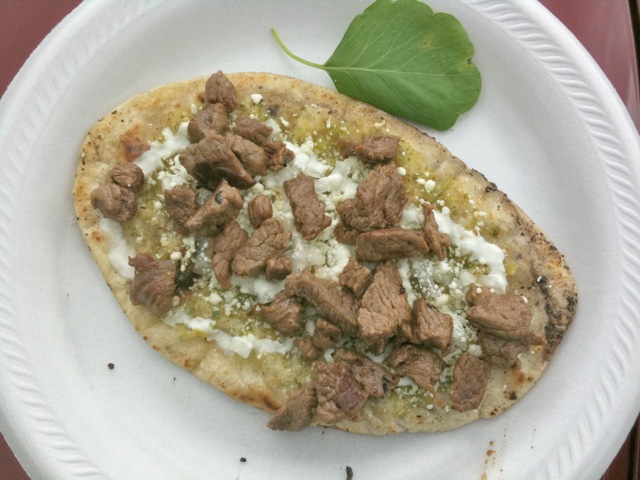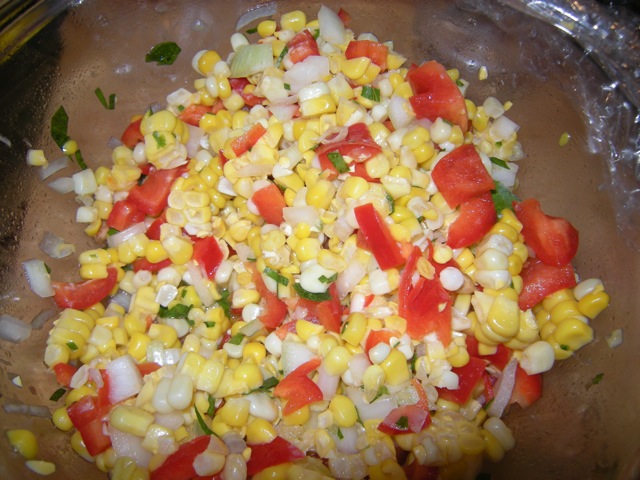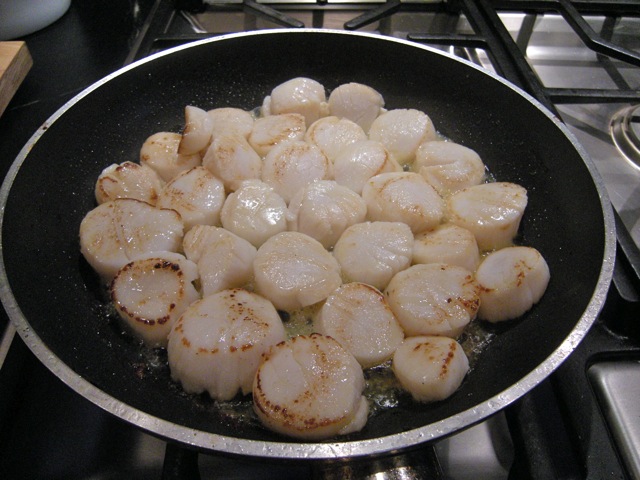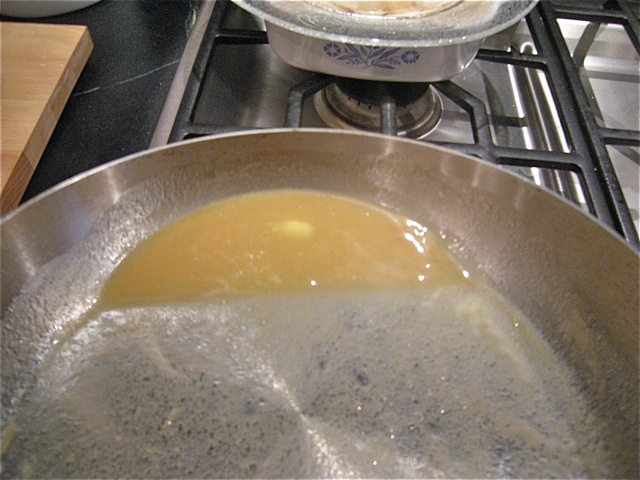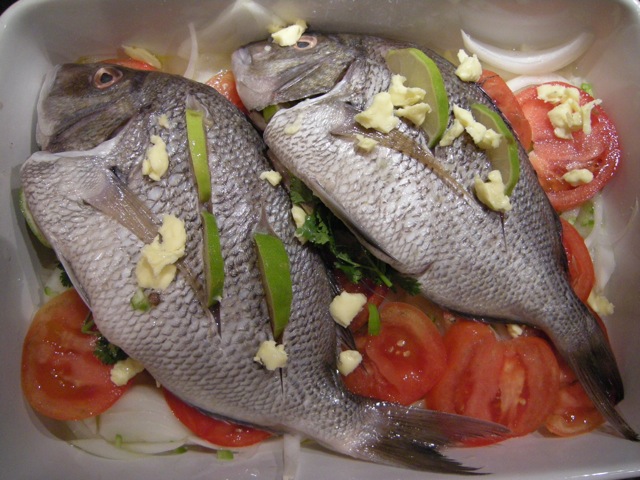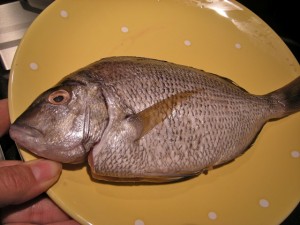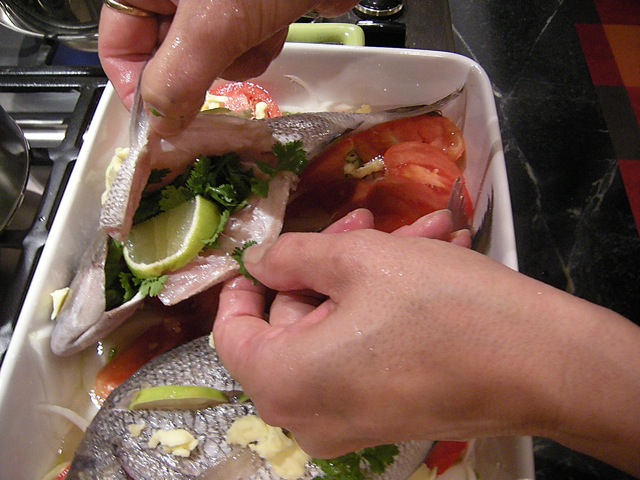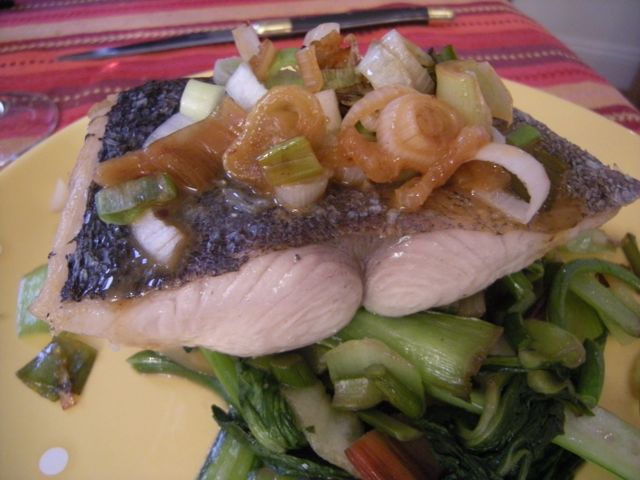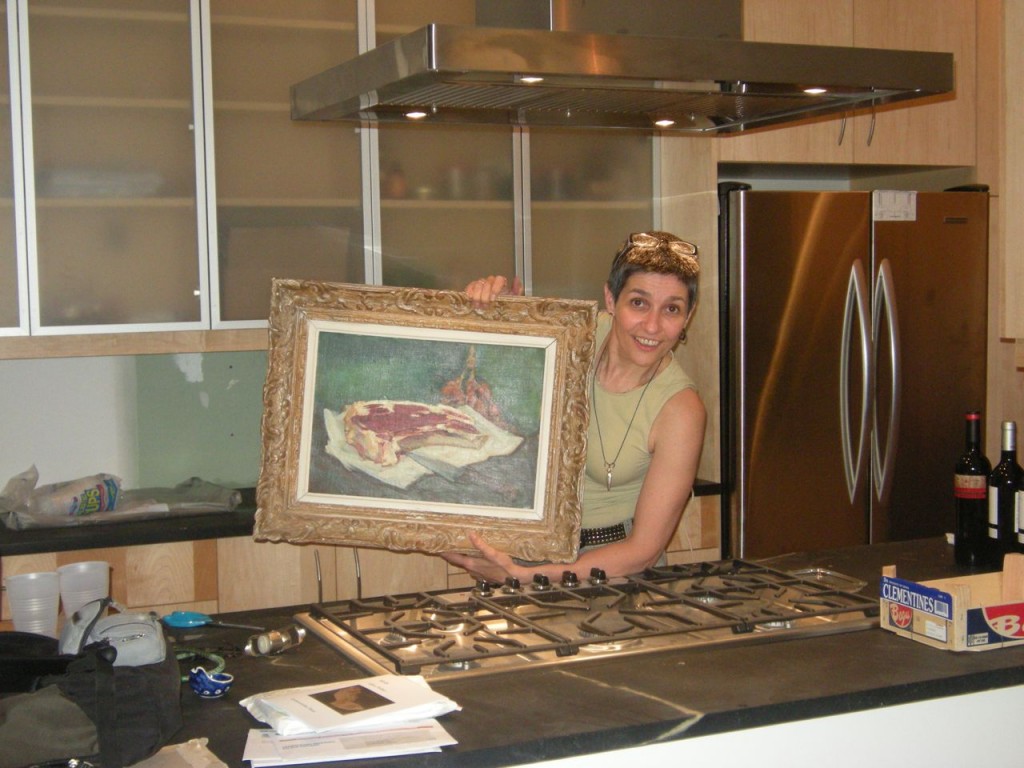Thanks to Anne’s comment on the papalo blog she sent me on the right track to find out more about huaraches. No wonder I couldn’t find any info I had the name wrong! I had understood guarachas. Anyhow I decided to depend my investigation and took a stroll to Guerrero Food Center in Brooklyn Greenwood Heights where I had read they had good ones. They offer 3 kinds of Huaraches Regulares: cecina —marinated salted sliced pork; enchilada & chorizo . I had a cecina and a chorizo. Overall taste was very salty, I ended up leaving some of the meat but finishing the thick and tasty bean filled tortilla. The were topped with cilantro, and not papalo. Definitely not as good as the one I had at the Poughkeepsie flee market.

According to the website of the Mexico city restaurant El Huarache Azteca the preparation was the creation of Señora Carmen Gomez. They also indicate that:
“luarache”, comes from the language of the Tarasco area where “cuarache” means sandal” (see original here)
And Jack Kerouac wore them while on the road:
I looked like a maniac, of course, with my hair all wet, my shoes sopping. My shoes, damn fool that I am, were Mexican huaraches, plantlike sieves not fit for the rainy night of America and the raw road night. (Jack Kerouac in On the Road, 1957)
I am not as enthusiastic —or lucky, as the Village Voice about the huaraches of the Guerrero Food Center . The one I ate (picture on top) were very salty and totally lacking “zestiness and sharpness”. The Upstate huaraches had all these qualities and more…
My New-York huaraches investigation would be totally incomplete without paying a visit to the famous Redhook park vendors. Redhook park is a great place to go hang out on week ends. Soccer on one side, baseball on the other & Latino food vendors all around! You can pick from Mexican, Guatemalan, Salvadorian, Chilean delicacies, but go see for yourself I might forget some.
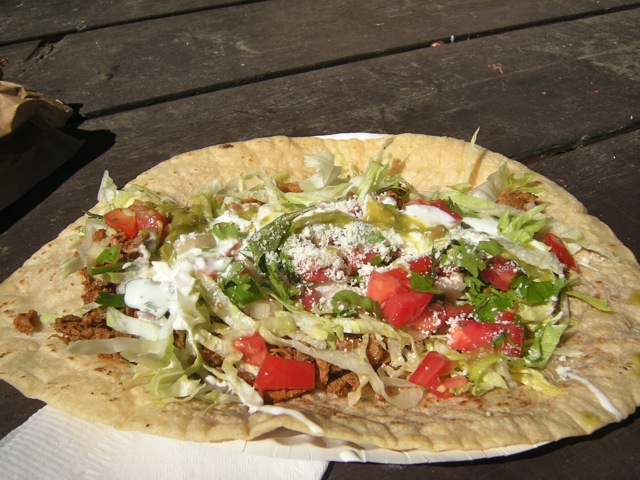
Only one vendor was featuring huaraches. We got a pork one with all the works. Instead of the oblong sandal shape thick bean filled tortilla, this one was roundish and rather thin. The overall taste was satisfying despite the meat a bit dry, not enough salsa on the bottom —we added some on top. The veggies were crisp. I could have used a little more cotijo cheese. The winner is definitely the Poughkeepsie flea market huaraches vendor. From what I have seen so far it doesn’t look like papalo is commonly served with huaraches but this is the way I am going to make mine. Stay tune for my Pyreneen sandals!


